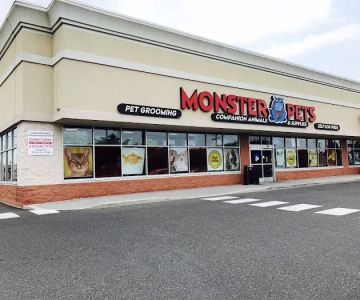Understanding Excessive Drooling in Dogs
As a dog owner, you may have noticed that your dog occasionally drools, especially when they’re anticipating a tasty treat or while excited. But when drooling becomes excessive and persistent, it could indicate an underlying issue. Excessive drooling in dogs, also known as ptyalism, can be triggered by a variety of factors. In this article, we’ll explore why dogs drool excessively and provide helpful tips on how to stop it.

1946 S Christopher Columbus Blvd, Philadelphia, PA 19148, USA
See Details1. Common Causes of Excessive Drooling
Before we dive into solutions, it’s important to understand the potential causes of excessive drooling in dogs. Drooling can occur for several reasons, including:
- Dental Issues: Gum disease, tooth infections, and abscesses are common causes of drooling in dogs. If your dog’s mouth is sore, they may drool more than usual.
- Heat Stroke: Dogs that are overheated may drool excessively as their body tries to cool down. This is particularly common in hot weather or during vigorous exercise.
- Poisoning or Toxins: If your dog has ingested something toxic, such as a poisonous plant, chemical, or food that’s harmful to them, drooling can be a sign of poisoning.
- Motion Sickness: Just like humans, dogs can get motion sickness, leading to drooling, especially during car rides.
- Stress and Anxiety: Some dogs drool more when they’re anxious, stressed, or scared, especially in new environments or situations.
- Foreign Objects: If something is stuck in your dog’s mouth or throat, it may cause them to drool excessively. This could be a small toy or even a piece of food.
2. Tips to Stop Your Dog from Excessive Drooling
Now that we know the potential causes, here are some steps you can take to stop your dog from drooling excessively:
2.1 Regular Veterinary Checkups
One of the first steps to take when you notice that your dog is drooling more than usual is to schedule a visit to the vet. A veterinarian will perform a thorough examination to check for underlying health issues such as dental problems, infections, or conditions that could be causing the excessive drooling. Regular checkups ensure that any health issues are caught early, allowing for prompt treatment.
2.2 Oral Care and Hygiene
Since dental issues are one of the main causes of drooling in dogs, maintaining proper oral hygiene is crucial. Regular brushing of your dog’s teeth, providing dental chews, and scheduling professional cleanings can help prevent gum disease and tooth decay, both of which can lead to drooling. If your dog shows signs of bad breath, swollen gums, or difficulty chewing, make sure to consult your vet for further evaluation.
2.3 Keep Your Dog Hydrated and Cool
If your dog is drooling due to heat or overheating, it’s important to make sure they have access to fresh water at all times and to keep them cool. Avoid walking your dog during the hottest parts of the day and provide them with a shaded area or air-conditioned space if they are prone to overheating. If your dog shows signs of heatstroke, such as excessive panting or drooling, take immediate action and contact your vet.
2.4 Address Anxiety and Stress
For dogs that drool due to anxiety or stress, providing a calming environment can help reduce excessive drooling. You can try using calming products like anxiety wraps or pheromone diffusers to create a relaxing atmosphere for your dog. Additionally, establishing a consistent routine and offering positive reinforcement during stressful situations can help reduce anxiety over time. If anxiety continues to be an issue, your vet may recommend behavior modification techniques or medication.
2.5 Be Mindful of What Your Dog Eats
Be sure to monitor what your dog eats to avoid potential sources of drooling. Keep harmful substances, such as toxic plants, chemicals, and foods that are dangerous to dogs, out of reach. If your dog tends to eat things they shouldn’t, like socks or small toys, try using a muzzle or keep an eye on them to prevent ingestion of foreign objects that could cause drooling or other complications.
3. When to Seek Immediate Veterinary Help
While occasional drooling is normal, if your dog’s drooling becomes excessive and is accompanied by other symptoms like vomiting, lethargy, difficulty breathing, or unusual behavior, it’s essential to seek immediate veterinary care. These could be signs of a more serious underlying condition, such as poisoning, an infection, or a neurological issue that requires prompt treatment.
4. Conclusion
Excessive drooling in dogs can be a cause for concern, but with the right approach, you can help manage and prevent it. By maintaining your dog’s oral health, ensuring they stay cool and hydrated, addressing any anxiety, and watching their diet, you can help reduce drooling and improve their overall well-being. Always consult your veterinarian to rule out any serious health problems and get the best care for your pet.









